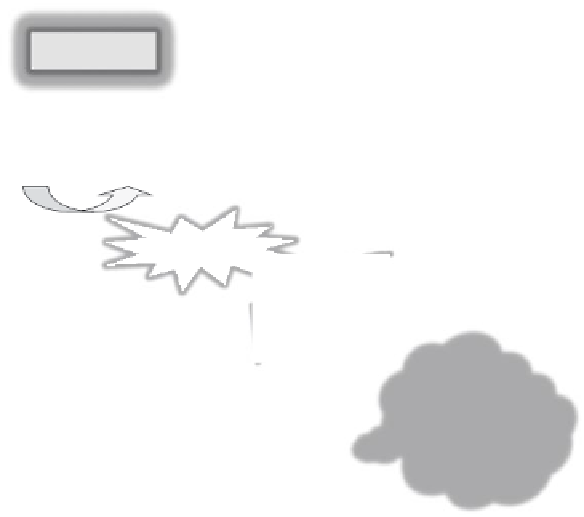Environmental Engineering Reference
In-Depth Information
electrical resistance, hardness, chemical resistance, and tarnish resistance metals. Figure
4.3 gives an example of the processes associated with metal fabrication. The sources of
solid and liquid waste discharges are seen in the diagram. Most of the chemicals used in
the metals inishing business end up as wastes. Considering that the various inputs to the
processes include acids, solvents, alkalis, cyanide, loose metals, and complexing and emul-
sifying agents, it will not come as a surprise to note that the waste discharge and waste-
waters can contain these chemicals and various other residues, especially since many of
the processes include rinsing and bathing operations. These wastes predominately result
from the use of (a) organic halogenated solvents, ketones, aromatic hydrocarbons, and
acids during the surface preparation stage of the overall inishing process and (b) cyanide
and metals in the form of dissolved salts in the plating baths during the surface treatment
stage. These will all be found in the discharge streams shown in the bottom right of the
diagram in Figure 4.3, as sludge, solid waste, and wastewater.
In the pig iron production process, the lue dust generated is captured by wet dust clean-
ers. In common with most of the typical metal inishing processes shown in Figure 4.3,
steel inishing involves a number of necessary processes in the production of the desired
surface and mechanical characteristics for the steel. The sulfuric acid used in most pick-
ling processes creates hazardous by-products. Pickling solutions contain free acids, fer-
rous sulfate, undissolved scale and dust, and the various inhibitors and wetting agents as
well as dissolved trace elements. The concentration of acids and their types largely depend
on the type of iron being produced. Finishing operations generate efluents containing
rolling oils, lubricants, and hydraulic oils that are in free and emulsiied states. Other oils
Alkalis, acids, solvents,
emulsifying agents
Solid waste
Metal fabrication
cutting and forming
Rinsing and
bathing
Metal preparation
cleaning
Rinsing and
bathing
Acids
Wastewater
Cyanide,
Acids,
Alkalis,
Metals
Anodizing
Electroplating
Chemical conversion
Plating
Painting
Other
Sludge
solid waste
wastewater
Metals, acids
Complexing
agents,
metals, acids
Paints, solvents
FIGURE 4.3
Processes and waste products generated in metal fabrication and preparation. (Adapted from EPA,
Proile of
Metal Products Industry
, Washington, DC, Ofice of Enforcement and Compliance Assurance, 1995.)





































Search WWH ::

Custom Search